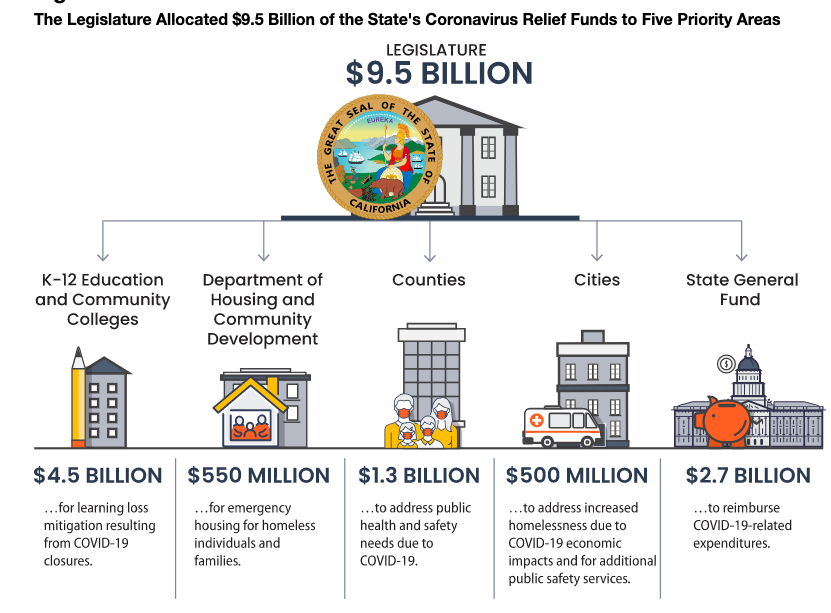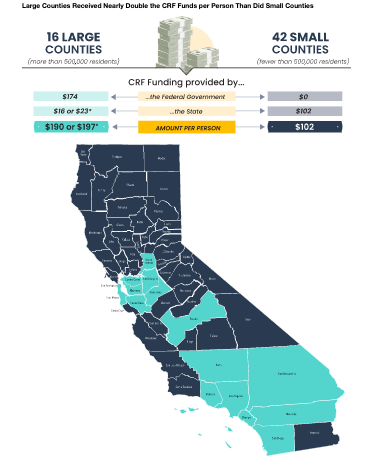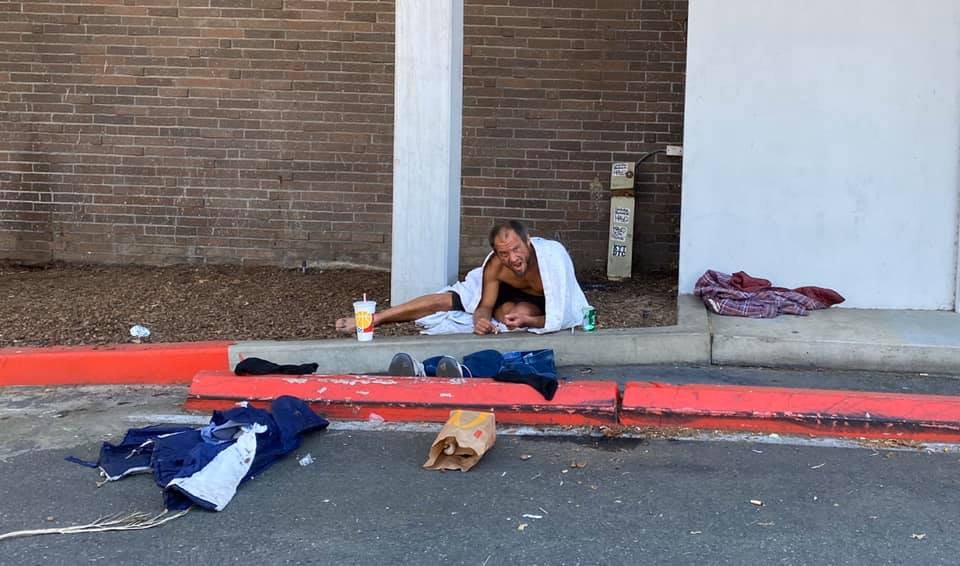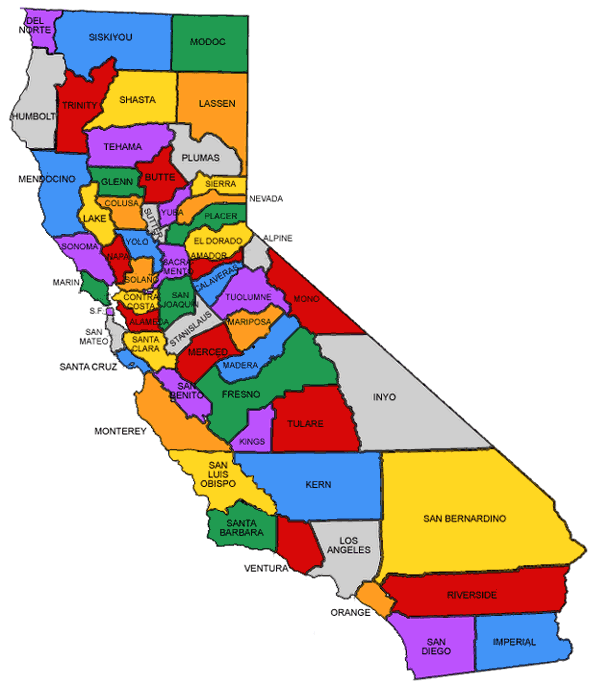
Elaine Howle, CA State Auditor (Photo: CA.gov)
CA Auditor Report: State Distributed Double CARES Act Funding To Larger Counties
Smaller CA counties received barely half the of the CARES funding per person than larger counties
By Katy Grimes, January 21, 2021 3:25 pm
The California State Auditor Elaine Howle just released a report exposing that the state distributed $9.5 billion in federal coronavirus relief funds with smaller counties receiving barely half of the funding per person than larger counties. “In August 2020, we designated the State’s management of federal COVID-19 funds as high risk and indicated that the likelihood of mismanagement of these funds is great enough to create substantial risk of serious detriment to the State and its residents,” Auditor Howle said.
The CARES Act was passed “to provide emergency assistance and health care response for individuals, families, and businesses affected by the 2020 coronavirus pandemic.”
In accordance with the CARES Act, the U.S. Treasury allocated in May 2020 $15.3 billion in CRF funding to California, which included $5.8 billion that the U.S. Treasury paid directly to counties and cities with populations greater than 500,000, the auditor reported. The U.S. Treasury paid the remaining $9.5 billion directly to the State to use for necessary expenses incurred because of the COVID-19 public health emergency. The U.S. Treasury is responsible for monitoring and overseeing CRF funds and requires recipients to periodically report on their uses of those funds. Additionally, the U.S. Treasury is authorized to recover CRF funds from recipients if their uses do not comply with requirements of the CARES Act.

The California Department of Finance is responsible for overseeing and managing the $9.5 billion in CRF funds that the U.S. Treasury paid to the State, and for reporting back to the U.S. Treasury on the uses of the funds.
As part of the State’s fiscal year 2020–21 budget process, Finance proposed allocations of the State’s CRF funds and the Legislature approved the final allocations, presented in the above graphic (Figure 1).
Because the budget directly allocates CRF funds to the California Department of Education, the Board of Governors of the California Community Colleges, and the California Department of Housing and Community Development, these departments are responsible for overseeing and managing their CRF funds. The Legislature also authorized Finance to reallocate unspent CRF funds for other allowable activities 10 days after providing a written notice to the Joint Legislative Budget Committee.
But, as the auditor discovered, “the method that Finance used to allocate $1.3 billion in CRF funds to counties in the State disadvantaged smaller counties because they received significantly less funding per person than the State’s 16 largest counties.”
Here is how:
“Although the U.S. Treasury directly provided a total of $4.5 billion in CRF funds to California’s 16 largest counties, Finance also allocated half of the State’s CRF funds designated for counties, to these large counties.”
“Because the Department of Finance allocated the remaining 50 percent of $1.3 billion in CRF funds to the 16 largest counties that had already received U.S. Treasury allocations, those counties received a total per-person amount of CRF funding that was nearly double the total per-person amount Finance provided to the 42 smallest counties.”
As the graphic below shows (Figure 2), large counties of more than 500,000 residents initially received $174 per person directly from the U.S. Treasury. Then the Department of Finance increased the per-person amount to at least $190. “In contrast, the 42 counties with fewer than 500,000 residents (small counties)—the ones that did not receive any CRF funds directly from the U.S. Treasury—received amounts equivalent to just $102 per person from Finance, resulting in small counties receiving significantly less funding per person than larger counties,” the Auditor reported.

This funding appears to be more of a bailout than federal COVID relief.
The audit also found:
- Some smaller California counties had as high or higher rates of COVID-19 cases.
- The State did not consistently evaluate cities’ adherence to State Public Health Orders.
The Department of Finance
The Auditor’s Recommendations:
In the event that the federal government provides California with additional funding that is similar to CRF funds and the Legislature decides to again direct such federal COVID-19 funds to local governments contingent on their adherence to certain requirements, Finance should ensure equitable treatment of local governments by doing the following:
-
- Propose a method to the Legislature to provide equitable funding to counties on a per-person basis or other basis that treats counties fairly and equitably.
- Ensure that it or its designee uses a formal process to evaluate all cities’ adherence to the Legislature’s requirements, and that this evaluation is documented and retained.
To prevent the State from having to return CRF funds to the federal government for inappropriate expenditures, Finance should continue to implement its monitoring plan to evaluate whether selected expenditures comply with the CARES Act.
To follow up on any concerns Finance may have identified during its readiness reviews, it should ensure that affected state departments have taken appropriate steps to resolve those issues.
The State Auditor ended the report saying “Finance agreed to consider implementing two of our recommendations, but it indicated that it does not intend to implement our recommendation to follow up on concerns it may have identified during its readiness reviews.”
The Department of Finance responded defending their distribution, saying that the allocation of the State’s CRF funds to counties is generally based on their relative share of the state’s population. The auditor disagreed: “To the contrary, as we state here, Finance allocated 50 percent of $1.3 billion to the 16 large counties that had already received funding from the U.S. Treasury, resulting in them receiving nearly double the total per person amount of CRF funding that Finance provided to the 42 small counties, because it believed there was a higher rate of COVID-19 spread in the 16 large counties due to their greater population density. However, as we also state here, COVID-19 case data does not support Finance’s assertion.”
- AG Bonta Promotes California’s ‘Migrant Community’ Over California Citizens - December 20, 2025
- HHS Acts to Bar Hospitals from Performing Sex-Rejecting Procedures on Children - December 19, 2025
- Top 50 Disasters Gov. Gavin Newsom Has Ushered into California: 2025 Edition - December 17, 2025





Corona is a psyop based on AIDS – all the propaganda (especially at the beginning) made that obvious. That’s why you had the “cruise ships” (cruzing), or the “Batsoup in a wet market” (cf bushmeat in a bathhouse), etc.
So the question is: why the CARES act? It’s another in-joke because of the 1990 Ryan White CARE Act. If you look closely at the original CARE act, you’ll see it’s a massive giveaway to big pharmaceutical companies and expansion of federal power that has nothing to do with public health – all in the name of “AIDS.” And if you look at the original CARE Act, it gave money primarily to urban centers. Seriously, when are we going to understand the whole Corona thing for the intelligence operation it just obviously is?
Similar to Dillinger’s famous quote :
BECAUSE THAT’S WHERE THE CAMPAIGN CONTRIBUTIONS ARE!!!